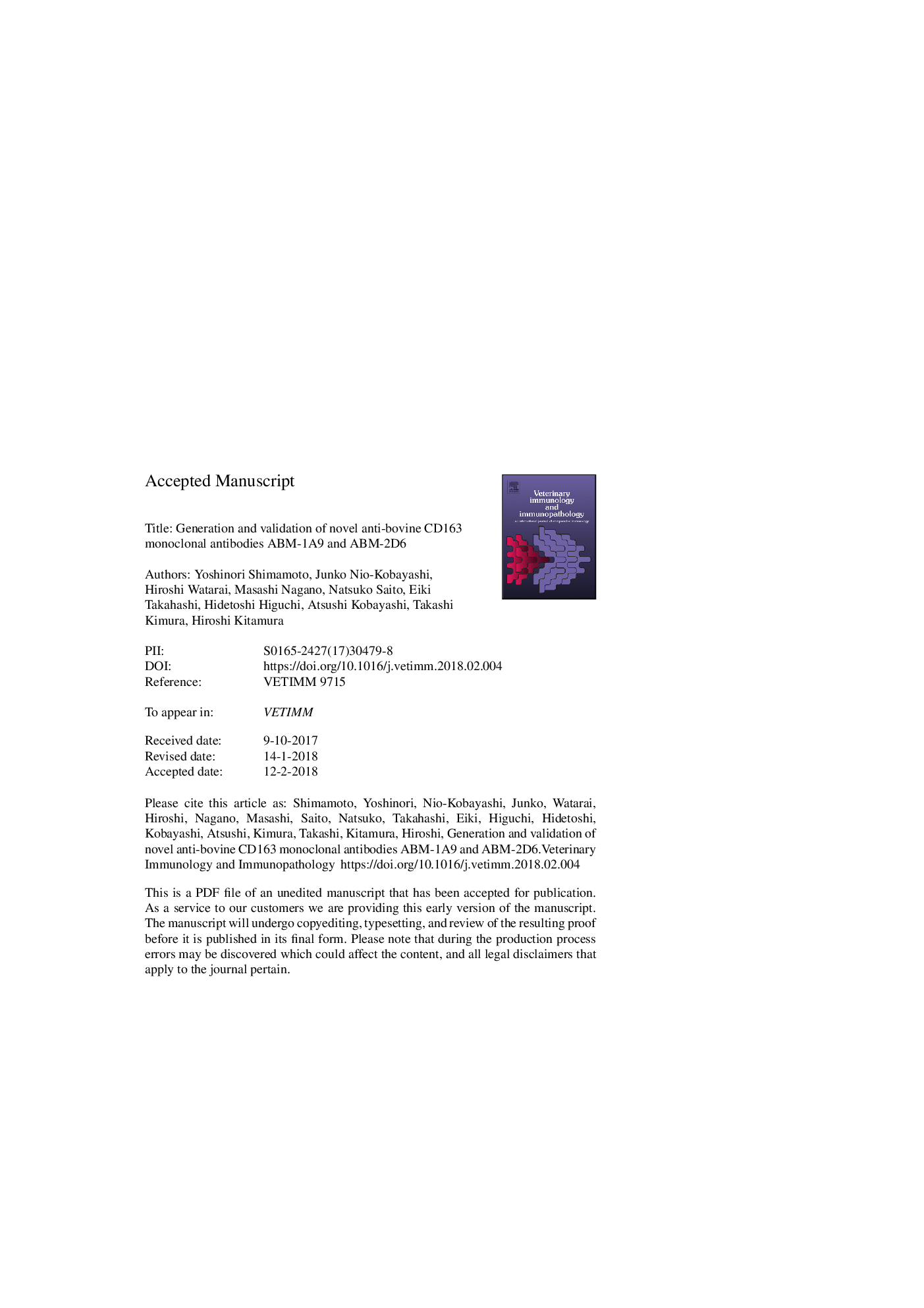| Article ID | Journal | Published Year | Pages | File Type |
|---|---|---|---|---|
| 8504719 | Veterinary Immunology and Immunopathology | 2018 | 47 Pages |
Abstract
The scavenger receptor CD163 is widely used as a cell signature for alternatively active “M2” macrophages in mammals. In this study, we generated two monoclonal antibodies, ABM-1A9 and ABM-2D6, against the extracellular region of bovine CD163. Conventional Western blotting using the antibodies yielded immunoreactive bands of bovine CD163 at 130 and 150â¯kDa in non-reduced and reduced spleen lysates, respectively. The minimum limit of detectable concentration of both antibodies was relatively lower (5.0â¯ng/mL) than that of the anti-human CD163 monoclonal antibody AM-3â¯K (>1.0â¯Î¼g/mL), which has been used previously for the detection of bovine CD163. An immunohistochemical study using formalin-fixed paraffin-embedded sections revealed that ABM-1A9 and ABM-2D6 clearly stained some Iba1+ macrophages in the lymph nodes of cattle with mastitis. Moreover, the CD163-stained macrophages were frequently observed engulfing leukocytes. ELISA using ABM-2D6 distinguished levels of circulating soluble CD163 in healthy cattle (less than 16.9â¯pmol/mL) and cattle with mastitis (more than 33.7â¯pmol/mL). These new monoclonal antibodies can be used in the diagnosis and evaluation of inflammatory disease prognosis in cattle with immunohistological analyses and blood test applications.
Related Topics
Life Sciences
Agricultural and Biological Sciences
Animal Science and Zoology
Authors
Yoshinori Shimamoto, Junko Nio-Kobayashi, Hiroshi Watarai, Masashi Nagano, Natsuko Saito, Eiki Takahashi, Hidetoshi Higuchi, Atsushi Kobayashi, Takashi Kimura, Hiroshi Kitamura,
